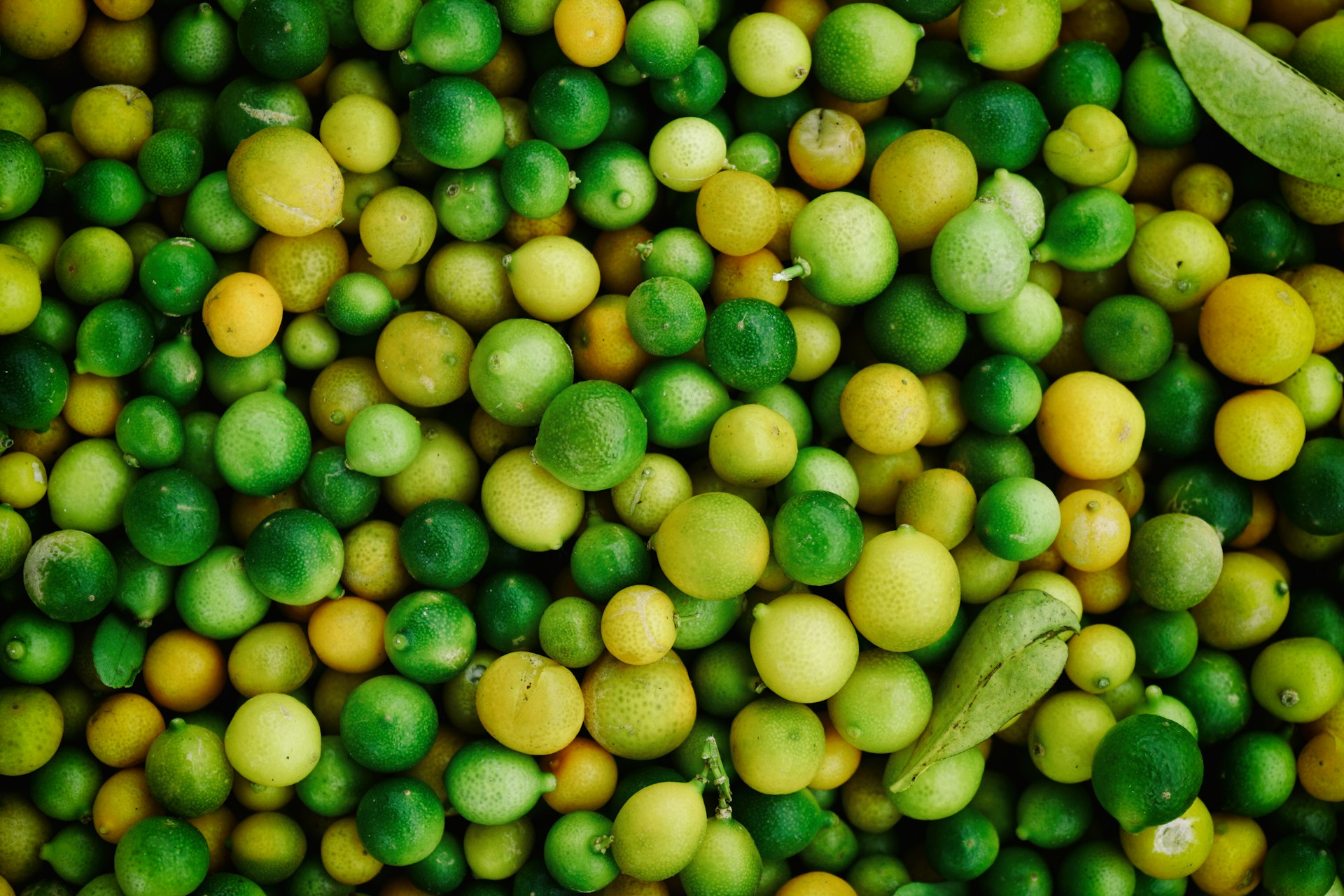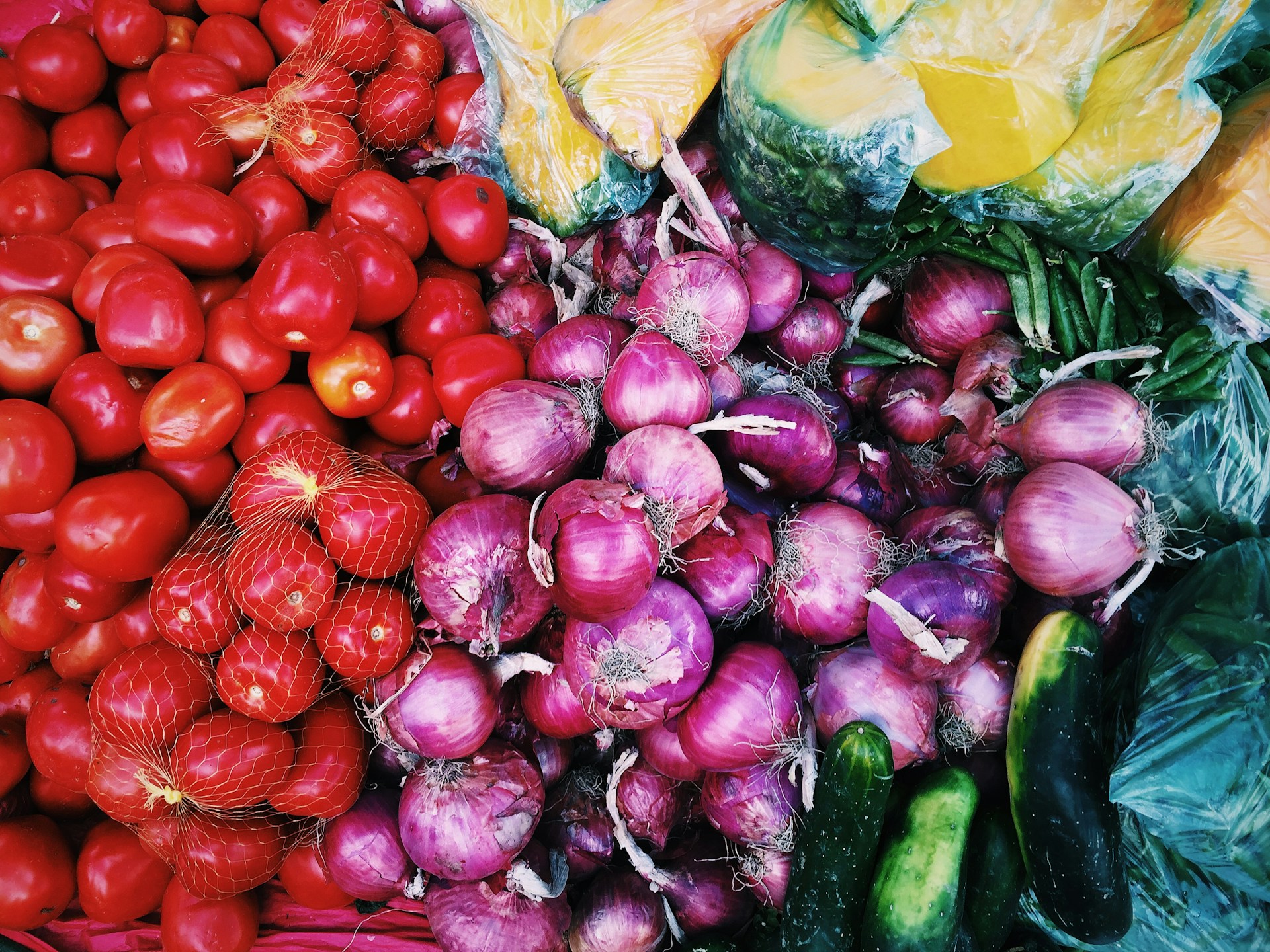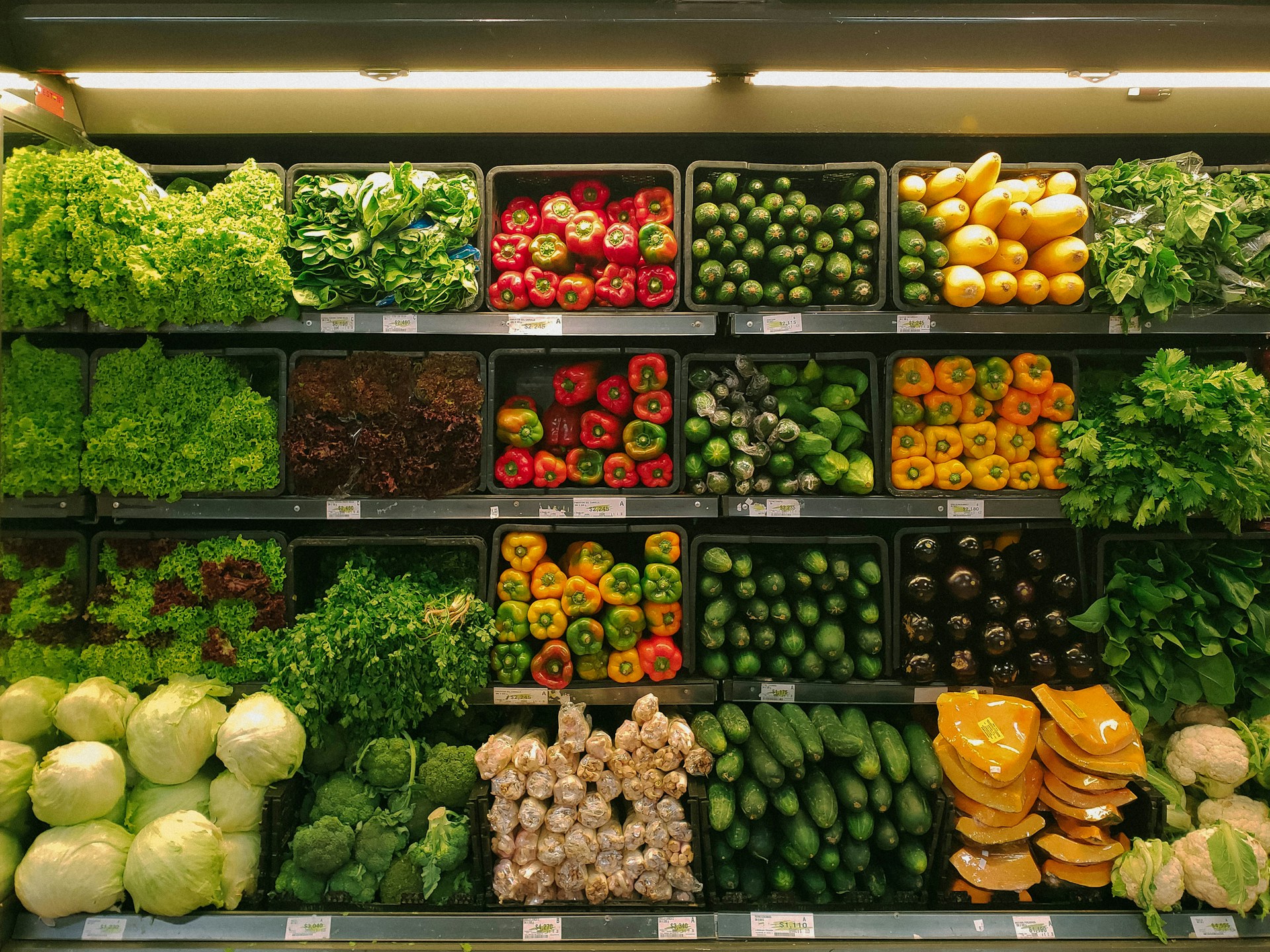In today’s competitive market, distinction is key for produce retail brands.
Engaging practices can turn occasional buyers into loyal customers, and storytelling is an effective tool to apply.
But, the question remains – how can the rich world of fruits and vegetables be woven into captivating narratives?
The concept may seem abstract at first; after all, are apples and broccoli compelling protagonists for our stories?
Surprisingly, they can be.
This post will delve into practical strategies of using storytelling as an essential element in produce retail branding, making simple vegetables and fruits the heroes of our narratives.
Contents
Storytelling Strategies For Produce Retail Brands
1. Highlight farm-to-table narratives.
The concept of farm-to-table is more than a mere buzzword; it is a narrative that delves deep into the origins of food and its journey to the consumers’ plates.
Such narratives add value and authenticity to the produce retailed, lending a unique selling proposition that draws in the environmentally conscious and health-focused clientele.
Storytelling through farm-to-table narratives can effectively tie consumers, farmers, and retailers together, fostering a sense of community and shared values.
They subtly educate the customers about the benefits of consuming fresh, locally sourced products, and the positive impacts it has on community health, economy, and environment.
Detailed and vibrant accounts of farmers’ labor, love, and dedication that go into raising each crop, creates a vivid, value-rich picture in consumers’ minds of what they are receiving.
Moreover, these stories serve as a medium for triggering emotions, adding an emotional quotient to a usually mundane grocery shopping activity, thus enhancing customer engagement and loyalty.
It is essential for produce retail brands to take their customers on a visual journey of these farms, their cultivation practices, and the faces behind the labor.
Images and videos of ripe crops, lush farms, engaged farmers, accompanied by descriptive narratives can create an immersive, interactive customer experience.
Utilization of digital platforms for conveying these stories also significantly increases retail brands’ reach, giving them a chance to gather an almost global customer base.
These farm-to-table narratives can be incorporated in various brand marketing materials such as websites, blogs, newsletters and social media posts, providing a consistent messaging across all channels.
Apart from supporting local farmers, these stories also carry an essence of supporting sustainable farming practices, and ethical treatment of labor and livestock.
Providing transparency about production methods, assurance about the absence of potential harmful agricultural chemicals, and showcasing environmentally friendly farming practices raises the ethical and health bar for the brand, strengthening trust and promoting customer retention.
Sharing stories and trivia about specific fruits, vegetables, or food items, their nutritional value, ideal harvesting season, and traditional usage can help engage customers by providing them with valuable knowledge and insights into their daily food intake.
Combining these narratives with recipe inspirations and serving ideas can serve as a practical guide to consumers, illustrating the path from the farm, onto the table.
Retail brands can take this opportunity to collaborate with reputed chefs, nutritionists and food influencers to add a credible voice to these narratives.
Finally, customer testimonials showcasing their positive experiences with the farm-to-table produce, improvement in their health and lifestyle can serve as an effective advocacy tool for the retail brand.
2. Showcase Seasonal Ingredient Stories
Storytelling in retail is an impactful strategy that can significantly contribute to brand awareness, engagement, and ultimately, sales growth for produce retailers.
Seasonal produce brings about an enormous array of tastes, colors, and textures that inspire the creation of innovative dishes and culinary trends.
As a produce retailer, this presents an opportunity to engage your customers through seasonal ingredient stories, shedding light on where the produce comes from, how it’s grown, harvested, and brought to the market.
By effectively conveying these stories, retailers can foster a deeper connection between the customer and the food they consume, reinforcing the value and importance of local and seasonal produce.
Take for example the humble apple, a staple fruit for many households.
In autumn when apples are in their peak season, it’s the perfect time to share stories about local apple orchards, the dedicated farmers who tend to the apple trees, and the journey an apple takes from the tree to the store.
Additionally, educating customers about the distinct varieties of apples and suggesting recipes or preparation methods can be another part of the story.
You could also delve into the tradition of apple picking, which for many is a beloved seasonal ritual, further adding depth to the narrative and making the apple not just a fruit, but a symbol of autumn.
In addition, these ingredient stories can be expanded into a multimedia campaign: pairing blog posts with video tours of the orchards, farmer interviews, or cooking segments featuring the seasonal produce.
This creates a multidimensional storyline that taps into the visual, intellectual, and emotional elements that are all critical in successful storytelling.
By doing so, you’re not just selling a product; you’re selling an experience, a connection to nature, and a healthier lifestyle – all of which add value in the eyes of consumer.
Moreover, this can boost your brand’s credibility and trustworthiness as customers appreciate transparency and authenticity.
The power that seasonal ingredient stories hold should not be underestimated; they humanize the brand, generate empathy, and build meaningful customer relationships that can convert occasional buyers into loyal patrons.
Simplicity, authenticity, and emotional connection are key elements in these stories.
Ultimately, successful storytelling doesn’t revolve around your products alone but also the people involved in the product’s journey and the lives enriched by consuming it.
In a market where almost every retailer is selling similar produce, your unique stories and the way you tell them could very well be your key differentiator.
3. Engage Customer with Recipe Inspirations
One powerful way to engage customers and propel your brand’s growth is by diversifying the standard shopping narrative and incorporating creative recipe inspirations into your storytelling strategy.
By doing so, you not only offer practical value to your customers but also create a connection through shared culinary interests.
Seasonal recipe suggestions can be a hit and an innovative way to highlight your fresh farm-to-table ingredients.
When consumers can visualize delicious dishes they can create using your produce, it meteorically enhances their overall shopping experience.
You can leverage channels like your brand’s website, social media pages, newsletters, or the packaging of your produce to disseminate various recipe ideas.
These recipes need not be complicated; indeed, presenting simple yet unique ideas would ensure that a broader audience can connect with your brand.
You can even explore themes based on specific customer segments like quick healthy meals for fitness enthusiasts or fun recipes for kids.
If your supply involves various exotic fruits or vegetables, recipe ideas would be a great strategy to remove the intimidation factor and encourage customers to try new things.
Sprucing up your recipe inspirations with alluring food photography can strike an emotional chord with your audience, enticing them to try the recipe, and in turn, purchase your produce.
A step further would be to create video content – it’s trending, engaging and provides a visual walkthrough of the cooking process, adding immense value to your customer’s brand experience.
Remember, the success of your engagement strategy largely depends on consistency, so make sure you churn out fresh recipe ideas regularly.
Collaborating with food bloggers, influential chefs, or nutritionists could give your recipe content a professional touch and boost your brand’s credibility.
However, it’s crucial that your recipes not only look good but also taste good – hence, ensure they are tried, tested, and curated to induce a flavorful experience.
User-generated content wherein customers share their version of your recipe or their innovative creation using your produce could multiply engagement.
This creates a sense of community among your customers and makes them feel a part of your brand story.
To sum up, offering recipe inspirations is a spectacular way to engage customers and intertwine your brand’s story with their culinary journey.
4. Utilize customer testimonials.
One of the most compelling ways to share the narrative of your produce retail brand is through customer testimonials.
These testimonials harness the power of storytelling in a way that resonates with potential customers, as they come from those who have first-hand experience with your products.
An emotionally engaging customer testimonial can build trust and influence purchasing decisions more than any advertisement.
Testimonials also add credibility to your brand’s commitments and claims regarding farm-to-table produce and sustainable farming practices.
You can validate your brand story and amplify its reach by featuring real-life experiences of customers who appreciate your efforts.
Giving voice to customers not only make them feel valued, but also allows potential customers to visualize the impact of your brand.
Through customer testimonials, you can showcase the real-life benefits of choosing your fresh, seasonal, locally sourced produce.
These stories can be shared on a variety of platforms, from your website to social media channels, creating engaging content that fosters a stronger connection between your brand and consumers.
Moreover, featuring customer testimonials empowers your clients to become brand advocates, sharing their positive experiences with others in their networks.
The power of a positive review can’t be ignored; it’s a form of word-of-mouth marketing, which is proven to be extremely effective.
While crafting these testimonials, it’s essential to keep them genuine and true to the customer’s experience.
Remember to ask for your customer’s permission before publicly sharing their testimonial to maintain trust and respect privacy.
These testimonials make your customers feel a part of your brand’s journey, enhancing their loyalty and encouraging repeat purchases.
Investing time in recording customer testimonials and sharing them can significantly boost your brand’s reputation and visibility in the marketplace.
All in all, effectively utilizing customer testimonials is a potent tool in narrating your brand’s story and increasing consumer trust.
5. Spotlight Farmer Profiles and Journeys
Invoking a powerful sense of identity, farmer profiles and journeys can often serve as one of the primary touchstones for product storytelling in the realm of produce retail.
When customers learn about the individuals who cultivate the food they consume, they often develop a deeper connection with the produce, appreciating not just its taste but also the effort and dedication that goes into its farming.
By bringing farmer’s stories into the spotlight, brands can build a strong narrative around the authenticity and care involved in the journey of their produce.
Thus, sharing stories about the farmers not only fosters transparency but also infuses a sense of warmth and honesty often associated with homegrown produce.
From the day they plant a seed to the day they harvest fully-grown produce, farmers dedicate countless hours and boundless energy to nurture the crops to fruition.
By casting a spotlight on these narratives, retailers can help consumers visualize and appreciate this careful process.
This type of storytelling can even incite consumers to seek out certain produce brands over others, favoring the ones they feel an emotional connection with.
Illustrating a farmer’s journey is quite straightforward.
Brands could use a multitude of platforms like websites, social media, or in-store signage to feature profiles and interviews, or share anecdotes and photographs from the farmers’ lives.
They could also include real-life accounts about their farms, including stories focusing on sustainability practices, unique cultivation methods, or breakthroughs in produce quality.
Every farmer has their own unique journey and these distinctive narratives can provide engaging and impactful content to the consumers.
Brands could even get creative and offer engaging touchpoints such as ‘a day in the life’ videos, blog posts or ‘meet the farmer’ events.
This section of storytelling is critical as it creates a human connection and showcases the hard work of these farmers, building a bridge between the farm and the customer’s table.
The approach not only brings the farmers’ personalities to the forefront but also offers a transparent view into the source of the produce.
The effectiveness of this approach lies in helping consumers understand that behind every fresh piece of produce there is a farmer, a person doing their utmost to bring the most healthy and fresh food to their tables.
In this age where consumers have become increasingly conscious about the source of their food, such storytelling efforts could prove beneficial for both brand awareness and reputation.
The Bottom Line
Expanding on farm-to-table narratives, spotlighting seasonal ingredients, engaging customers with inspiring recipes, featuring appreciative testimonials, and presenting the devoted profiles of our farmers are all focal points that have resonated throughout this article.
Embracing these elements not only augments the appeal of our products for customers, but also underscores the authenticity and sustainability of our initiatives.
The substantial impact of these practices is building a more meaningful and enriching experience for consumers, celebrating not just the end product, but the journey it takes from farm to plate.
Last but not least, honoring the devoted professionals who grow, harvest, and deliver the food we eat, it amplifies our shared commitment to sustainability, community support, and the joy of good eating.




